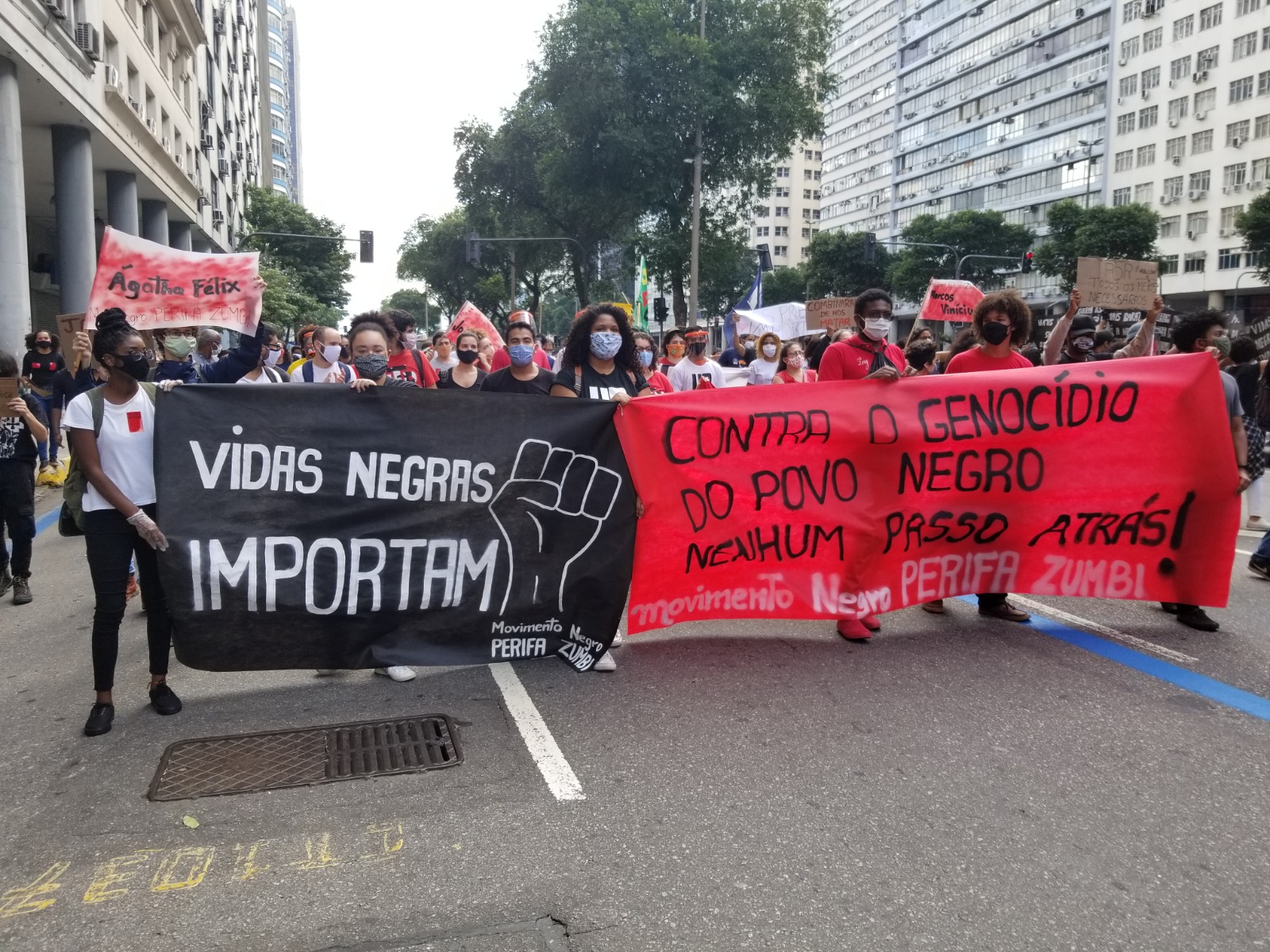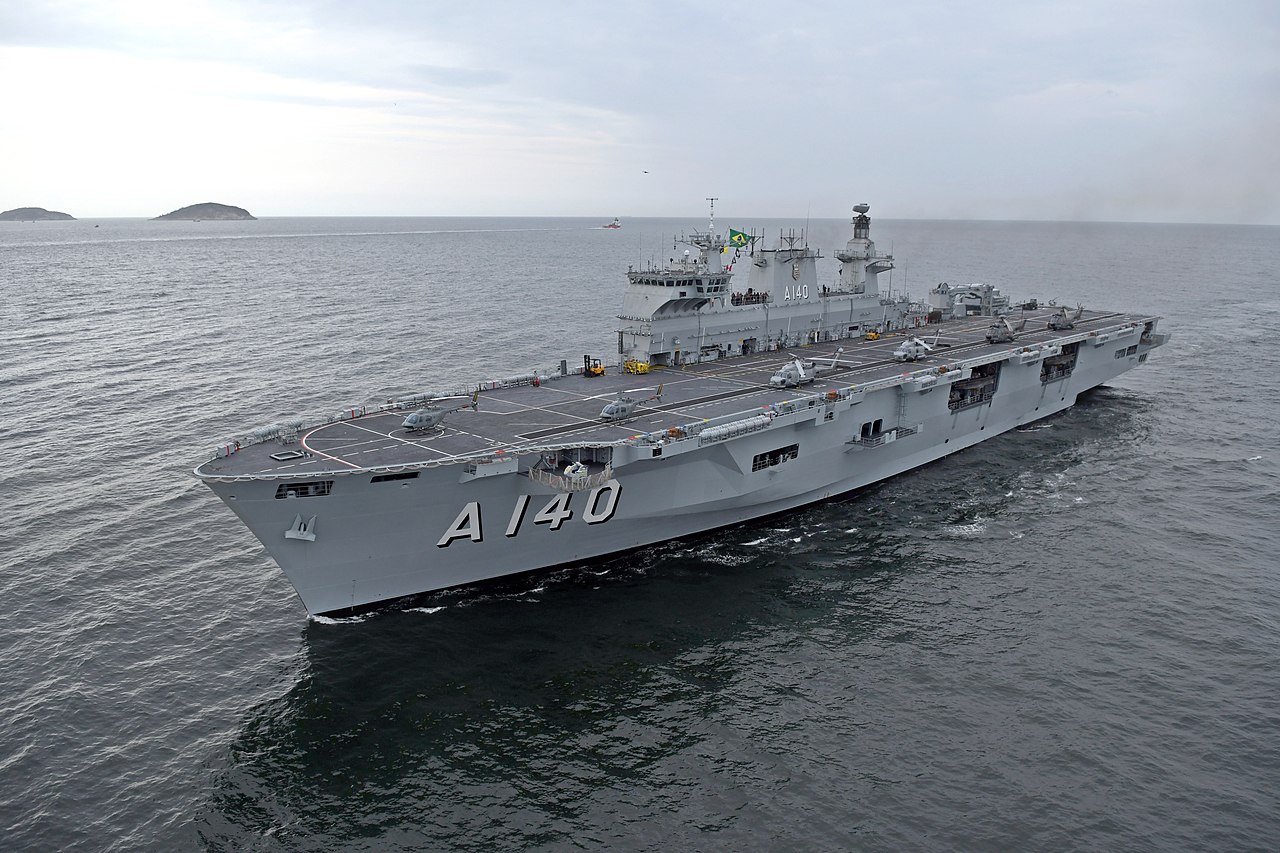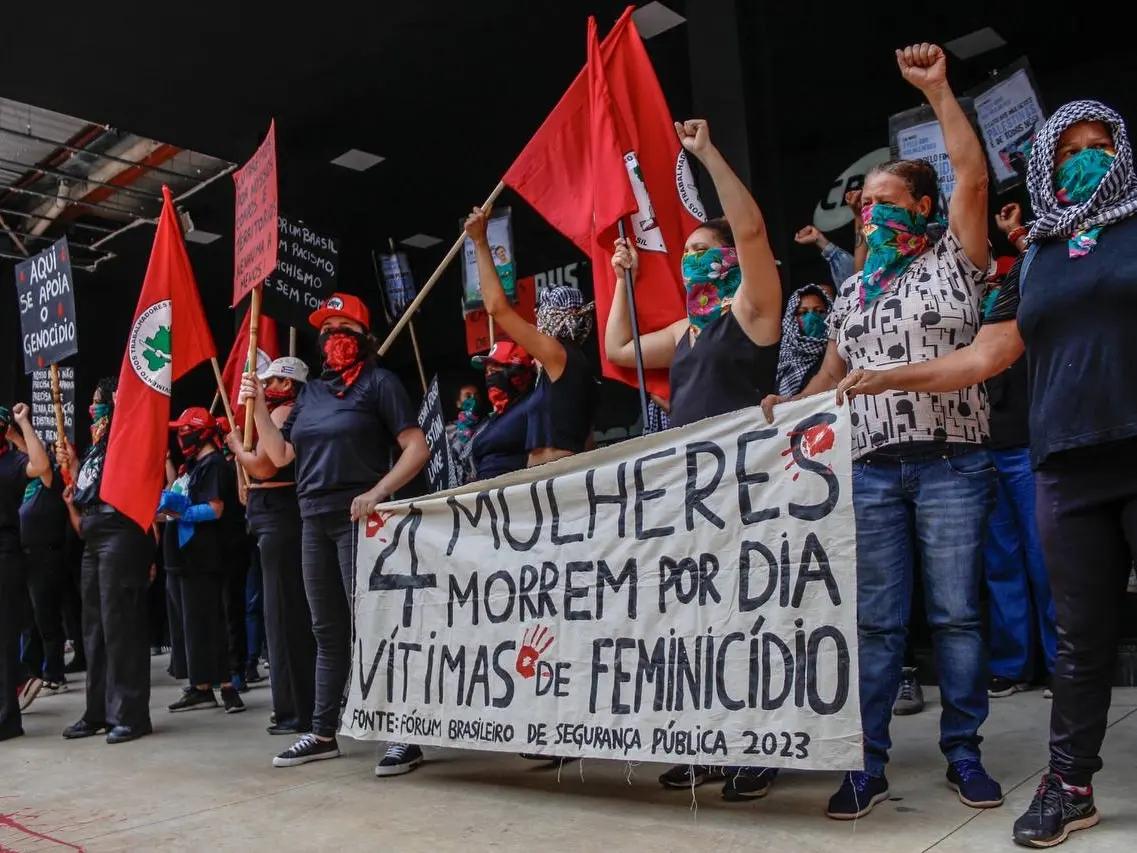Violent repression in the Favelas
Between gangs, militia, and police
“Favelas” are Black neighbourhoods in Brazilian cities, the result of an urban influx following the abolition of slavery, that made no provision for reparations or resettlement for the formerly enslaved – only for their former proprietors. The precarious situation of people in these improvised urban settlements was never properly addressed, with the only responses to such informal forms of organization and employment being violent repression, starting in particular with the military regime that took power in 1964.
After 1990, the situation was aggravated by the liberalization of trade in Brazil that led to a huge influx of American arms and made Brazil a drug trade route. The combination of state repression and violence from the growing drug trade created a war-like situation in many poor, urban communities especially Rio de Janeiro. The population in these neighbourhoods has thus been subject for many decades to severe armed violence at the hands of drug gangs, paramilitary militias (frequently composed of retired or off-duty police officers), and the police and armed forces.
In 2024, Rio de Janeiro police killed 703 people, a decrease compared to years like 2018, when they killed 1,444 people. These killings come in the context of a militarized state response to problems of armed violence that has relied almost entirely on repression, rather than the provision of key services. As Rio journalist and activist Gizele Martins told Huffington Post,
“In our history, we’ve had one soldier for every 55 inhabitants, but we never had a doctor or a teacher for every 55 inhabitants”.
This is not only a Rio de Janeiro problem, though. “Federalization” of prisons, with leaders of São Paulo and Rio de Janeiro narcotrafficking groups sent to prisons outside their regions, combined with the total neglect of people in prison, has contributed to a decentralization of these groups and an increase in “recruitment” in other parts of Brazil. With only punitive responses, the level of police violence has increased and spread, with other states in Brazil, like Bahia, now having a higher number of police deaths than Rio de Janeiro. According to the Brazilian Public Security Forum, in 2024, police killed 1.556 people in Bahia, 813 people in São, 703 people in Rio de Janeiro and 606 people in Pará (far from a complete list). Police are responsible for around 17% of homicides in Brazil.
Violence against women is a major aspect of the police, militia, and gang violence in the favelas and periferias.
Militarized forms of control and international circulation of guns to the favelas
Since 2006, the Brazilian Army has been deployed in Rio de Janeiro’s neighbourhoods under so-called “pacification” efforts. With these missions, carried out under the Garantia da Lei e da Ordem (Guarantee of Law and Order, GLO), the military steps in to support police forces in retaking areas the state classifies as dominated by drug-trafficking organizations. In addition to the GLO, president Michel Temer declared a military intervention in Rio de Janeiro Black neighbourhoods in 2018. Such operations have been identified by communities as sources of insecurity and fear. However, since armed Forces generals have been subject to scrutiny due to their participation in an attempted coup in 2021, their involvement in public security has been cut back.
Along with the police and criminal gangs, there has been increasing violence from armed militias. While supposedly formed to fight drug gangs, and initially welcomed by many in the affected communities, the militias have become at least as much as a threat to the safety of ordinary residents as the gangs themselves, They often work hand-in-glove with the police, and engage in protection rackets, drugs and arms trafficking.
All these elements are accompanied by an influx of arms to these areas. According to the Swiss investigative news website Lighthouse Report, Swiss-made Piranha armoured vehicles, originally exported to equip Brazilian Marines on a UN mission in Haiti, were later redeployed in Rio de Janeiro’s favelas, where they became instruments of state violence. In 2015, one such vehicle left 29-year-old Vitor Borges paraplegic and with an amputated leg after a soldier in it opened fire. Brazilian authorities eventually confirmed the vehicles’ domestic use, often in operations involving BOPE, a police unit accused by Human Rights Watch of extrajudicial executions. Among these deployments was the São Francisco operation in the Maré complex (2014–2015), which resulted in 15 deaths, including that of Jefferson Rodrigues.
Racism
There is a strong racial element to armed violence in Brazil, which has a majority black population. Black people are more likely to die of armed violence and are the majority of the victims. In 2023, almost 90% of people killed by the police were Black. In some cities in the Northeast, where the Black population is higher, the number goes up to 100%. There are strong parallels between racialised police violence in the US and Brazil, even though Brazilian numbers are staggeringly higher than those of the US.
Black Lives Matter activists and Brazilian activist groups such as Network of Communities and Movements Against Violence have been developing links of solidarity. In Brazil, Novembro Negro (Black November) and Julho das Pretas (Black Women’s July) are key moments of Black resistance that denounce racism and state violence while affirming memory, dignity, and political protagonism of Black people, particularly Black women. Novembro Negro, centered on the national date of November 20th (Zumbi dos Palmares’ death), highlights the ongoing genocide of Black people through police violence, while Julho das Pretas, rooted in the struggles of Afro-Latin American women, foregrounds the leadership of Black women in resisting both racism and sexism. Beyond these commemorative months, resistance unfolds daily through mothers’ movements against police killings, favela-based collectives that document abuses, cultural production like hip hop and literature, legal and policy advocacy by Black organizations, and “quilombola” struggles for land and autonomy—all articulating a demand for life against the backdrop of armed violence.





